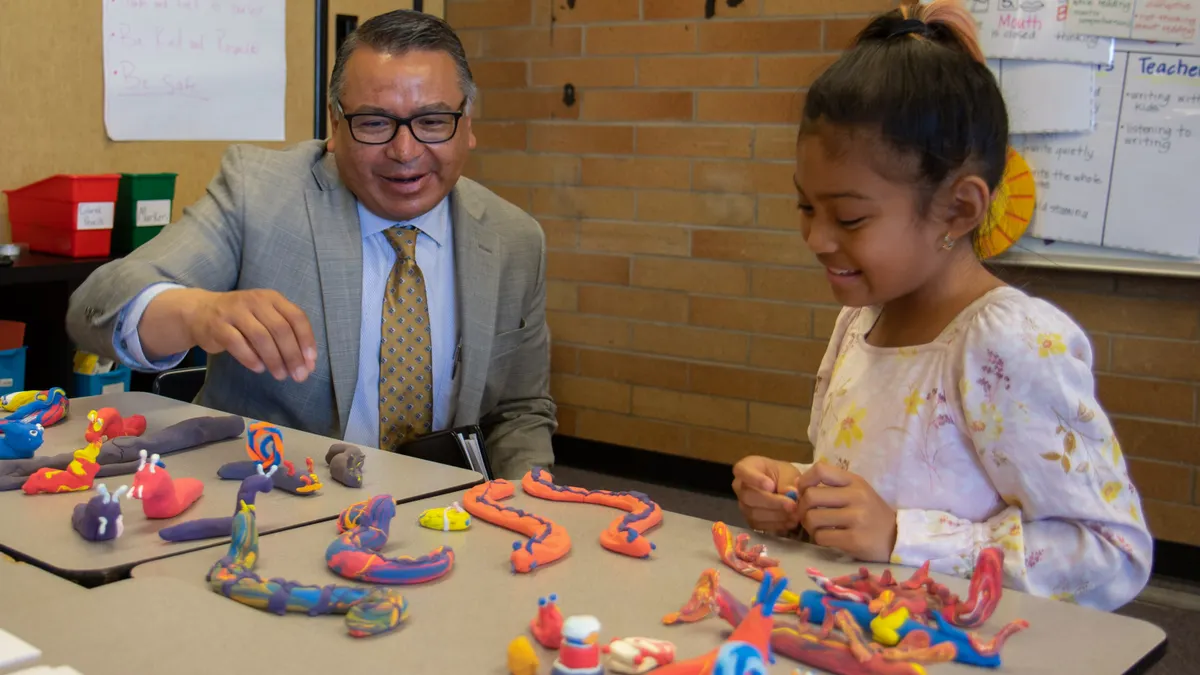Bob Fishtrom is director of information technology services at Mountain View Los Altos Union High School District in California.
Have you ever had a dream where you signed up for a class that you forgot to attend only to realize that the final exam is the next day? It’s an all too common anxiety dream shared by millions around the world — one that plagues people who haven’t been in school for decades.
For IT leaders who manage and maintain IT for educational institutions, we’ve all had our fair share of anxiety-induced episodes regarding the general well-being of our IT infrastructure: Are we running out of storage and memory? Do we have the necessary redundancy in place in the event of a cyberattack? And perhaps most urgent of all, should we continue sinking more dollars into an aging and brittle infrastructure that could crumble under the pressure of increased demand?

As the director of IT for the Mountain View Los Altos Union High School District, these questions were top of mind as we considered our own IT modernization options.
Bridging the communities of Mountain View, Los Altos and Los Altos Hills, MVLA is an expansive district serving five separate educational campuses and more than 4,500 students and 500 staff members. Situated in the heart of Silicon Valley, innovation isn’t just an aspiration for our community; it's a fundamental expectation. From students and teachers to school administrators, all of our users count on our IT systems to be consistently available, high-performing, and fully secure.
Last year, the collective unease of our IT staff was spiking as we realized that our IT infrastructure was quickly approaching its end of life. System performance was bogging down, application availability was growing spotty, and we were far from confident that if disaster struck, we’d be able to quickly bring all of our systems and data back online.
It was clear that if we didn’t get in front of this soon, we’d be playing a perpetual game of catch up.
Worse still, our team of eight full-time IT staff was spending an average of 10-15 hours per week administering our virtual infrastructure — time that could be better spent addressing the needs of our students and staff. Moreover, with Broadcomm’s acquisition of VMware last year, there was a great deal of uncertainty within our team around what their future licensing and support costs would be.
In short, we realized that we needed to upgrade and modernize our IT infrastructure soon or deal with the consequences later.
The future is hyperconverged
Before embarking on our modernization journey, we had to not only justify the cost of the initiative and the expected return on investment, but also clearly define our technical and operational requirements.
As anyone working in a public school district knows, budgets are always tight, and every dollar spent must be rationalized. Thus, it was critical that we could not only demonstrate that the investment in a modern IT infrastructure was necessary, but that it would also be cost-effective over the long term.
While our list of requirements was extensive, there were a few that rose above the rest. First and foremost, we needed to quickly migrate our existing virtual machines to a new environment with minimal disruption. Redundancy and automated failover was another critical requirement, especially with school districts across the country increasingly being targeted by ransomware attacks.
With these specifications in mind, we decided that a hyperconverged infrastructure (HCI) combined with a private cloud solution would provide us the agility we needed along with the robust performance and reliability to support our diverse range of educational applications and workloads.
Unlike conventional IT systems in which storage, compute, and network resources require their own dedicated machines, HCI systems can effectively replace all of these legacy components by combining them into a single, unified system.
However, as anyone who has managed a complex migration project will attest, the process is rarely predictable. And just like undertaking a major home renovation project, it’s usually going to take a lot longer and be more costly than you originally anticipated.
However, with a solid plan and the right technology and partners in place, you can significantly tilt the odds in your favor. In our case, we were able to successfully migrate our entire fleet of servers over to Nutanix in just 12 days with minimal downtime.
And because our current vendor employs a 3-2-1 architecture in which there are always three total copies of our data which are automatically replicated across two on-premises and one cloud instance, we finally felt confident that in the worst case scenario, we could bring all of our systems back online with relative ease. Best of all, our IT staff now spends just 15 minutes a week instead of 15 hours managing our virtual infrastructure.
3 lessons from our journey
Hockey legend Wayne Gretzky once famously quipped that, “I skate to where the puck is going, not to where it’s been.” In other words, progress requires a proactive and forward-looking approach. While every IT modernization initiative is unique, there are some foundational principles that can help you navigate the complexities of a modernization initiative:
- Know the difference between cost and value. When you’re a budget-strapped school district, it’s easy to get fixated on the lowest-priced option. But just like when you’re buying a car, you need to consider all of the costs that come with ownership, not just the sticker price.
This means looking beyond the initial purchase to consider maintenance, ongoing support, energy consumption, and the potential for scalability and upgrades. Just as savvy consumers will pay a premium for Apple products because they will last for years with minimal repairs, IT decision makers in education should evaluate technology investments for their long-term viability and the total cost of ownership. - Invest in partners, not vendors. Just like a good teacher fosters a love of learning that extends far beyond the classroom, a true technology partner goes beyond simply selling products.
Unlike vendors who may simply sell you a product and move on, partners invest in your success. This means they're committed to understanding your specific needs, challenges, and goals. They'll work with you to ensure the technology adapts and grows with your institution, offering solutions that are not just effective upon deployment but remain relevant and supportive as your IT environment evolves. - Embrace flexibility to ensure scalability. Educational technology needs are constantly evolving, not just in terms of features, but also in the number of users and devices. Seek out solutions built with scalability in mind, allowing your infrastructure to easily adapt to accommodate increased student enrollment, growing use of digital tools, and integration with future technologies.
Likewise, consider systems with modular designs where you can add or remove capabilities as needed, avoiding costly rip-and-replace situations down the road.
Regardless of where you might be in your IT modernization journey, just remember to keep the end goal in mind: Investing in education technology is investing in the future. The tools and systems you implement today will serve as the foundation for tomorrow’s learning and discovery.
















